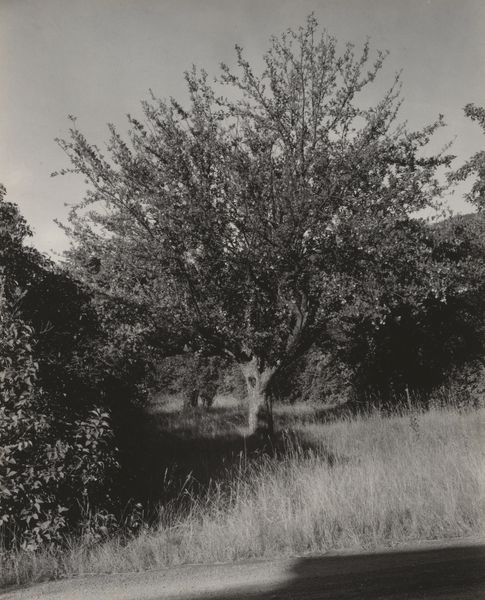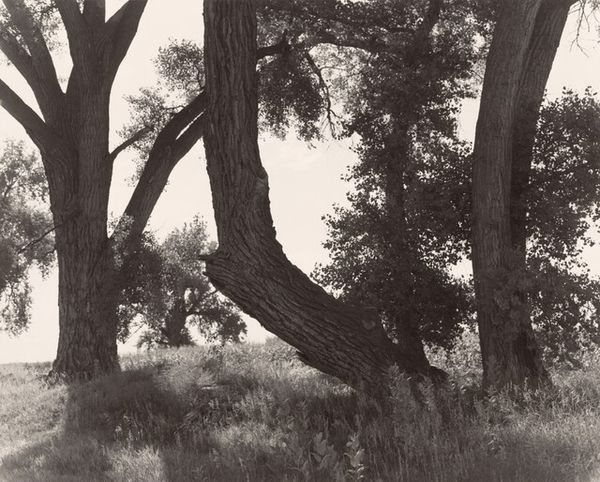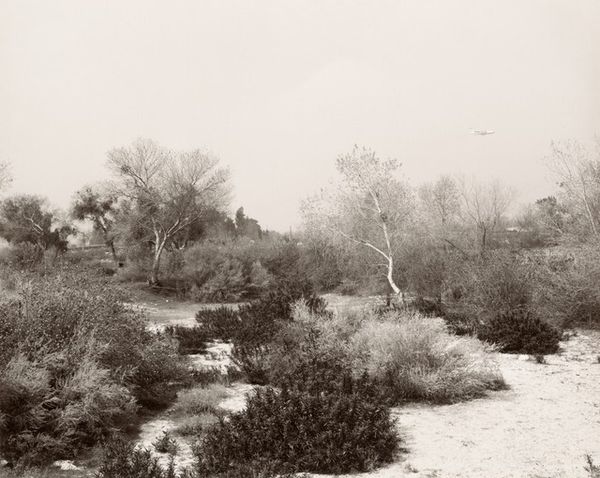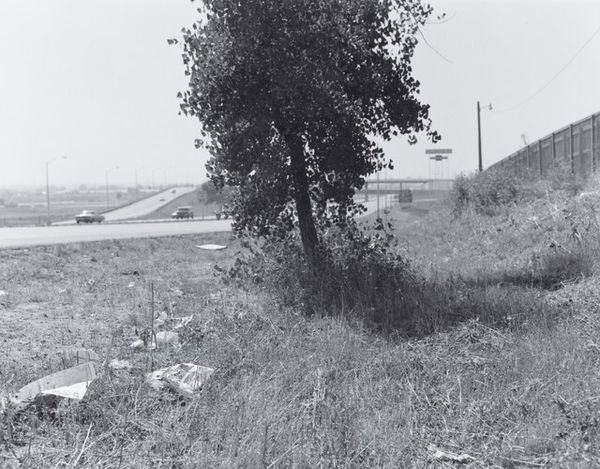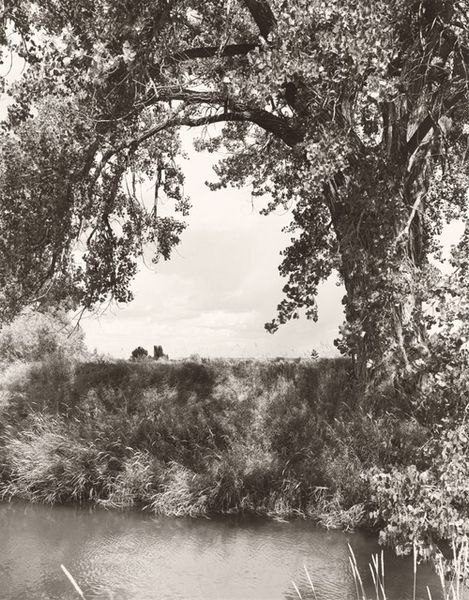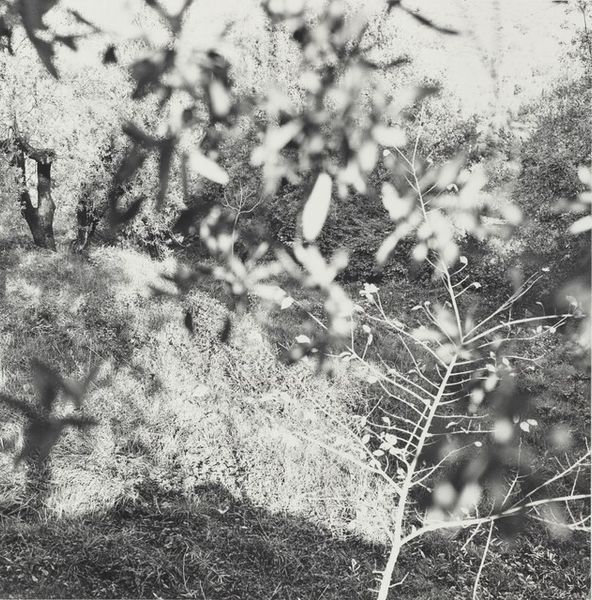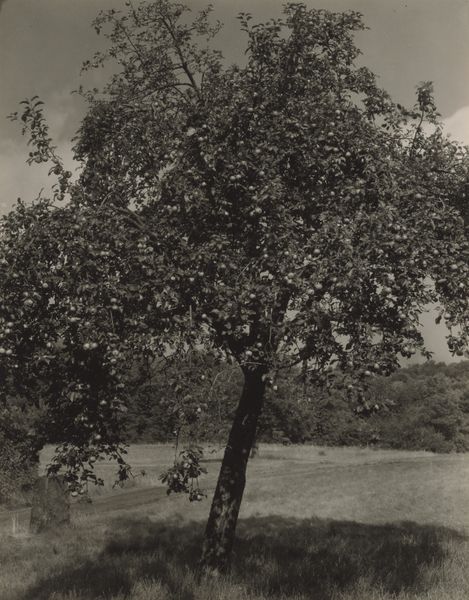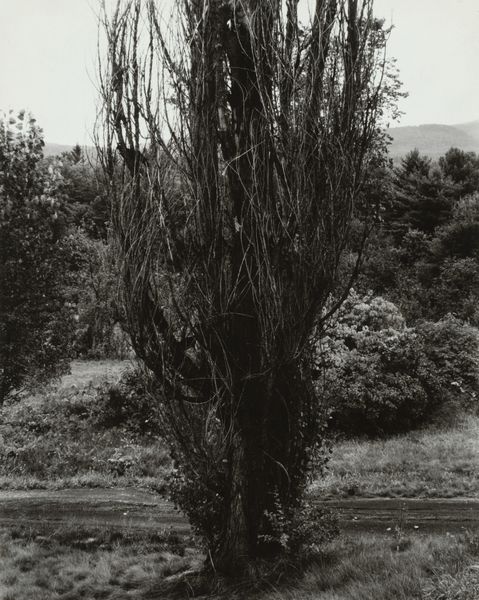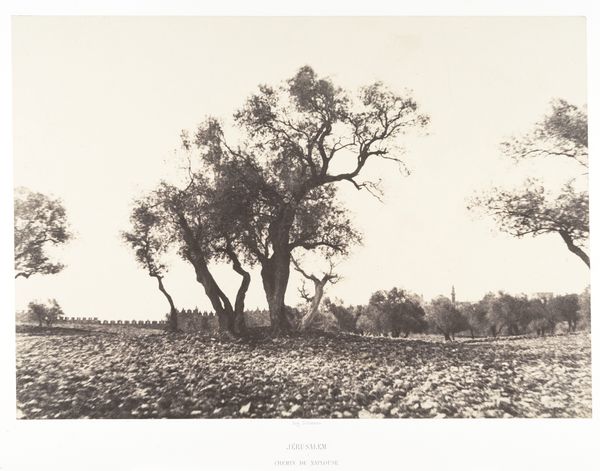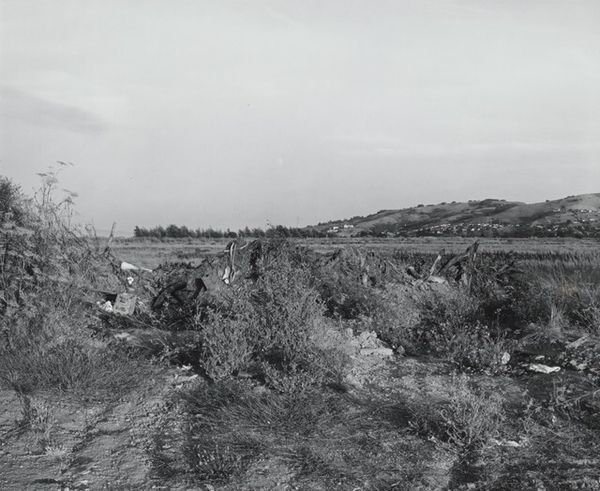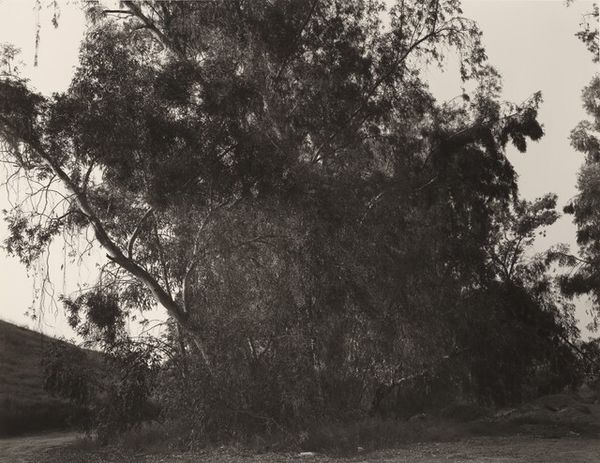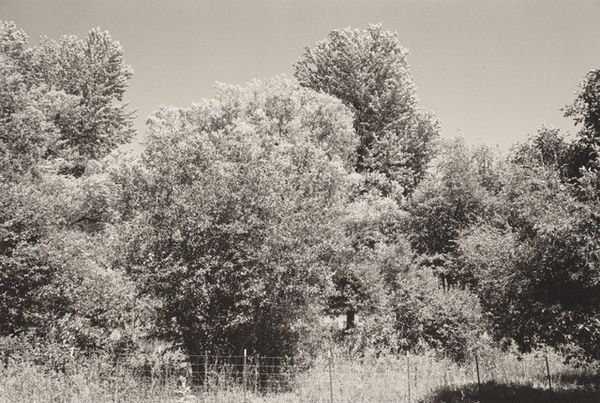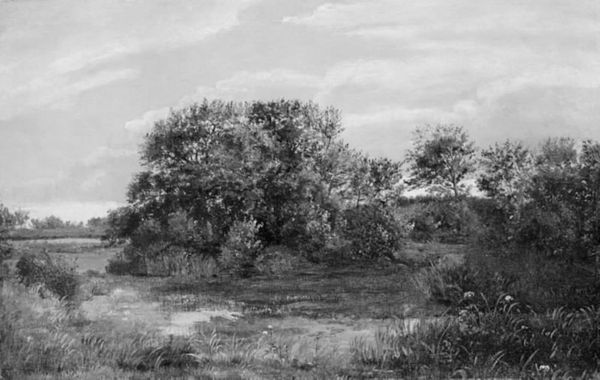
photography, gelatin-silver-print
#
black and white photography
#
landscape
#
black and white format
#
street-photography
#
photography
#
gelatin-silver-print
#
monochrome photography
#
monochrome
#
skyscape
#
realism
#
monochrome
Dimensions: image: 18 x 22.3 cm (7 1/16 x 8 3/4 in.) support: 27.9 x 35.6 cm (11 x 14 in.)
Copyright: National Gallery of Art: CC0 1.0
Editor: This gelatin-silver print, "East of Riverside, California" by Robert Adams, was created sometime between 1982 and 1996. It's a very quiet scene. Almost stark in its realism. The contrast feels quite flat. What strikes you about the composition? Curator: The formal structure is, at first glance, quite simple. A stark interplay of light and shadow defines the skeletal tree against the backdrop of the Californian landscape. Observe the tonality; a deliberate reduction to grayscale which eliminates distractions of color and guides our gaze. It pushes us to analyze the underlying architecture of the scene. What structural elements do you see repeating? Editor: Well, the bare branches of the trees create a network of lines against the sky. They seem to echo the contours of the distant hills, almost a visual rhyme. Curator: Precisely. Note also the way Adams balances the density of the foliage with the emptiness of the sky. This contrast, this opposition of textures, creates a dynamic tension. The frame emphasizes the layering. Consider how Adams invites the eye into the planes of space within the picture. He is not after sentimentality but on investigating a visual argument in our modern environment. Editor: So, by stripping away the color and focusing on these basic elements, he is pushing us to think more about the photograph as an object, and its construction? Curator: Exactly! It’s about understanding the photographer’s choices, their arrangement of form, line, and tonality. Adams offers a carefully constructed visual system rather than a straightforward representation. What we learn is about the artistic perspective, rather than the scene depicted. Editor: I see. I guess I was expecting something more dramatic, but there is complexity there, just quieter and more considered than I initially realized. Curator: Indeed. By emphasizing the formal properties, the photograph prompts a deeper appreciation of both its visual syntax and our response to its aesthetic presentation.
Comments
No comments
Be the first to comment and join the conversation on the ultimate creative platform.
